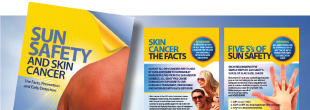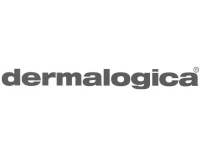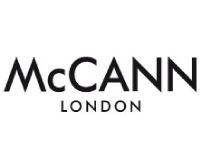
RAISING AWARENESS THROUGH EDUCATION
PROMOTING PREVENTION & EARLY DETECTION CAMPAIGNING FOR CHANGE
SKCIN: THE KAREN CLIFFORD SKIN CANCER CHARITY / REGISTERED CHARITY: 1150048

WE NEED YOUR HELP! PLEASE HELP US TO STOP SKIN CANCER TAKING MORE LIVES. WE ARE HUGELY GRATEFUL FOR YOUR SUPPORT.
Sunburn - The Facts
Skin Cancer Information
Sunburn is a reaction to UV radiation and is a clear sign that
you have seriously damaged your skin.

Skin cancer is the UK’s most common and fastest rising cancer.
It is now one of the biggest cancer killers in 15-34 year olds.

Solar Ultra Violet Radiation (UVR) is a known carcinogen.
It cannot be seen or felt and is the primary cause of skin cancer

Sunbeds are not safe - FACT! UV radiation from sunbeds can
cause serious and irreparable damage and cause melanoma

Worried about Vitamin D? Know the facts and how much sun
we need to produce the required daily levels.

Our skin is our body’s largest organ that performs a variety of
vital functions - learn how UVR affects and damages our skin

All skin types can be damaged by UVR, but some skin types
and family history of skin cancer can mean you are more at risk
How we tan:
Skin colour is dependent on a pigment called melanin. This is produced by specialised cells called melanocytes. Melanocytes produce packets of melanin called melanosomes and transfers them to the skin cells of the epidermis. Melanocytes are found throughout the skin. All races have the same number of melanoctyes. Black skin, however, has more melanosomes, giving better sun protection and more pigmentation. There are two types of melanin pigmentation: Genetically inherited skin tone, the other caused by sun exposure. Melanin protects your skin by absorbing harmful UV
radiation and it darkens when doing so, producing pigmentation and leaving you with a sun tan.
Sunburn and skin cancer Facts:
- One blistering sunburn in childhood or adolescence more than doubles a person's chances of developing melanoma later in life.
- A person's risk for developing melanoma also doubles if he or she has had five or
more sunburns at any age. - The sun exposure pattern believed to result in melanoma is that of brief, intense exposure for example a blistering sunburn - rather than years of tanning.
- Some people can develop sunburn after less than 15 minutes of sun exposure!
What is Sunburn and what happens to our skin?
Sunburn is a reaction to over exposure of UV radiation.
The superficial layers of the skin release chemicals
that cause your blood vessels to expand and leak
fluid causing swelling, pain and redness. Without
sun protection, UV radiation penetrates deep into
the layers of the skin causing damage to the skin
cells. Skin turns red within 2-6 hours of being
exposed and reaches peak redness after 8-24 hours.
It can take several days for the redness to subside.
Danger times for sunburn: UV radiation is most intense between 11am to 3pm in the British summer time. Sunburn can occur in less than 15 minutes sunbathing on a clear summer's day. People are most likely to get burnt when participating in sports or leisure activities and are not thinking about the sun and protecting themselves.
Peeling: Damaged skin cells self-destruct and peel off in sheets. It is the body's way of ridding itself of damaged skin cells that might develop into cancers.
Prevention is better than cure!
Protective attitudes to sun exposure during childhood can lead to fewer moles, a known risk factor for melanoma. Children who grow up with a knowledge and understanding of the importance of sun
safety are less likely to burn and damage their skin which can lead to skin cancer.
It is therefore imperative that children are educated about sun protection and sensible precautions.
Is your child's school Sun Safe? To find out how to get your child's school involved click here >
For information on how to adequately protect yourself and family against UV and sunburn, please go to: Skin cancer prevention >
You may also be interested in the following related topics:
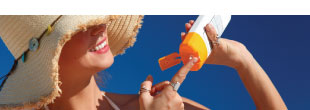
the golden rules of sun safety
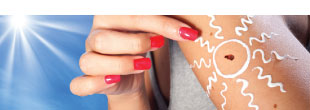
what you should be looking for...
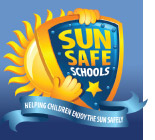
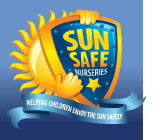
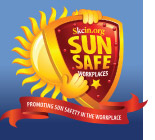
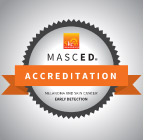
Articles of interest
SIG ROOFING PARTNERS WITH SKCIN
Aptly timed during skin cancer awareness month, National roofing merchant SIG Roofing has announ...
28th May 2024 3:05pm
SKCIN, a charity that specialises in the prevention and early detection of skin cancer through educational interve...
1st May 2024 12:39pm
AHEAD OF NATIONAL SKIN CANCER AWARENESS MONTH IN MAY, BRITISH BEAUTY BACKS VAT BURN CAMPAIGN AMIDST SKIN CANC...
26th Apr 2024 2:16pm
SUNAK WARNED MELANOMA CASES WILL INCREASE WITHOUT GOVERNMENT ACTION
Skcin are proud to support SNP MP Amy Callaghan with her on-going VAT Burn Campaign as she...
28th Nov 2023 12:20pm
SKCIN are delighted to highlight a positive initiative by New College Lanarkshire in Motherwell. The college is supporti...
22nd Jun 2023 1:05pm
